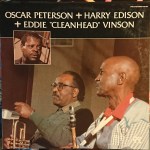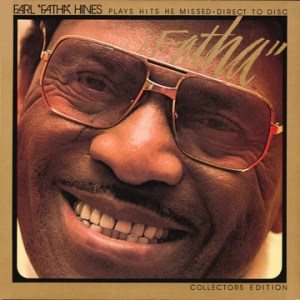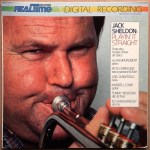
Hot Stamper Pressings of Pablo Recordings Available Now
More Reviews and Commentaries for Pablo Recordings
Many of Allen Sides‘ recordings suffer from a lack of ambience. The musicians do not seem to have much room around them. In audiophile parlance, his recordings often lack “air.” I can’t say all his recordings are made in a dead studio, but some of them sure are.
Many audiophile recordings, especially direct-to-disc recordings from the ’70s, are insufferable in this respect, with too much multi-miking and not enough studio space.
This Bach recording on Crystal Clear is a good example of the sound some audiophile labels were going for. Back in the 70s, audiophile producers and engineers were using state-of-the-art high-tech recording equipment, but they seemed to lack experience as well as knowledge of the recordings of the past. They regularly ended up producing records that are not remotely the equal of those that were commonly made only twenty years before.
For Duke is the poster boy for that sound. The instruments are dynamic as all get out, but no one ever imagined that the ideal approach to recording Ellington’s music would be to cram a big group of players into the equivalent of a heavily carpeted and draped livingroom.
Miller and Kreisel created a completely new, strange and inappropriate sound for Duke’s music, and it has been rubbing me the wrong way since I first heard it demoed in the audio showrooms of the 70s I used to frequent.
Sheffield’s first Direct to Disc recording suffered from the same problems to some extent. Lots of multi-miking, lots of instruments in isolation booths, no sense that everyone is playing together in a big room.
When the space in a recording is reduced on one pressing versus another, that is a sign that the pressing is question lacks resolution, and in our shootouts you lose a lot of points for that shortcoming. (Records that are especially good for testing Ambience, Size and Space can be found all over this blog.)
Bob and Ray is a favorite test disc of ours for three-dimensional sound. A big group of guys in 1958 playing live in a reverberant studio with superb acoustics produced our favorite wall to wall, floor to ceiling Large Jazz Group recording of all time. For the last fifteen years it has been invaluable in testing and tweaking the system.
Back to Oscar
For our review for the Oscar Peterson record you see pictured, we noted “Surprisingly spacious and three-dimensional for a recording from 1986.”
But that is setting the bar awfully low. Truth be told, recordings made in 1986 are rarely if ever as spacious or three-dimensional as those produced in the 50s, 60s and well into the 70s.
Two of the Worst
Of course, some of the most ambience-challenged records available today are on Heavy Vinyl. I could link to hundreds of them, but here are two that should get the point across well enough.
This album on DCC, like much of their dubious output, has very little of the breathing space of the vintage pressings we sell.
And the disgraceful label that released this title can be relied upon to press records that no audiophile with a decent stereo and two working ears should want anything to do with.
(more…)



 More on the UHQR
More on the UHQR